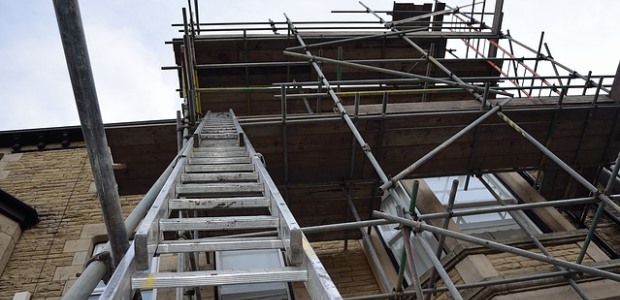
Researchers Count 113 Work-Related Ladder Fatalities in 2011
Their analysis, published in MMWR, also indicated Hispanics, self-employed workers, and workers in smaller establishments had disproportionately higher ladder fall injury rates.
A paper published in the April 24 edition of CDC's Morbidity and Mortality Weekly Report is an evaluation of injuries and deaths resulting from work-related falls from ladders. The authors analyzed data from several injury surveillance systems and calculated there were 113 fatal falls, an estimated 15,460 non-fatal injuries resulting in at least one day of lost time, and 34,000 non-fatal injuries treated in hospital emergency departments in 2011 alone.
They conclude that ladder fall injuries (LFIs) represent a substantial public health burden of preventable injuries for workers and there is a need for workplace safety research to prevent falls, including developing innovative technologies to prevent LFIs.
The authors are Christina M. Socias, DrPH, of CDC; and Cammie K. Chaumont Menéndez, Ph.D., James W. Collins, Ph.D., and Peter Simeonov, Ph.D., all three of whom work for NIOSH’s Division of Safety Research.
"Men and Hispanics had higher rates of fatal and nonfatal LFIs compared with women and non-Hispanic whites and persons of other races/ethnicities," according to their paper. "LFI rates increased with age, except for injuries treated in EDs. Fatality rates were substantially higher for self-employed workers (0.30 per 100,000 FTE workers) than salary/wage workers (0.06 per 100,000 FTE workers). Establishments with the fewest employees had the highest fatality rates. The construction industry had the highest LFI rates compared with all other industries. Across all industries, the highest fatal and nonfatal LFI rates were in the following two occupation groups: construction and extraction (e.g., mining) occupations, followed by installation, maintenance, and repair occupations. Head injuries were implicated in about half of fatal injuries (49%), whereas most nonfatal injuries involved the upper and lower extremities for employer-reported and ED-treated nonfatal injuries."
They report that the height of the fall was documented for 82 of 113 fatalities and an estimated 11,400 of 34,000 nonfatal, ED-treated LFIs. For nonfatal falls, nearly 90 percent were from heights below 16 feet, and fall heights of 6-10 feet were most common, accounting for half of ED-treated LFIs. For fatal falls, fall heights of 6-10 feet were most common, but they accounted for only 28 percent of all fatalities.
The paper includes several suggestions for employers that can prevent ladder falls:
- plan the work to reduce or eliminate the need for using ladders by applying safety-in-design and constructability principles to finish as much of the work as possible on the ground
- provide alternative, safer equipment for extended work at elevation, such as aerial lifts, supported scaffolds, or mast climbing work platforms
- provide properly selected and thoroughly inspected ladders that are well-matched to employee weight, task, and location
- when applicable, provide proper accessories to supplement safe ladder use
- provide adequate ladder safety information and training for employees
NIOSH's smartphone app "Ladder Safety" is available here.